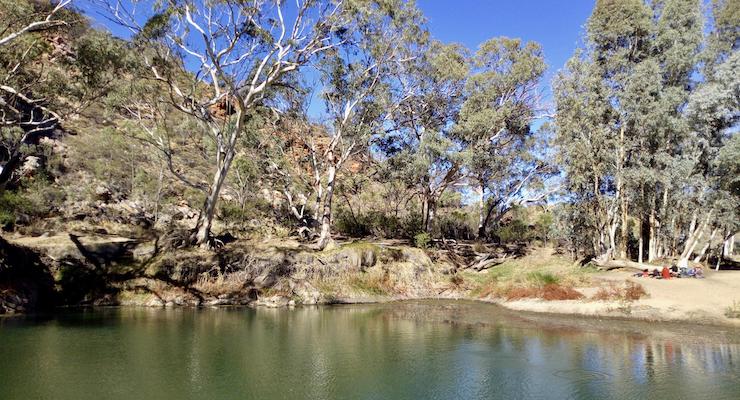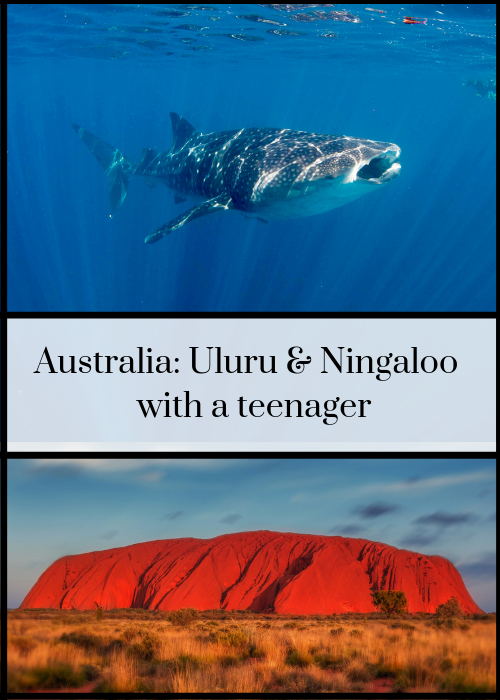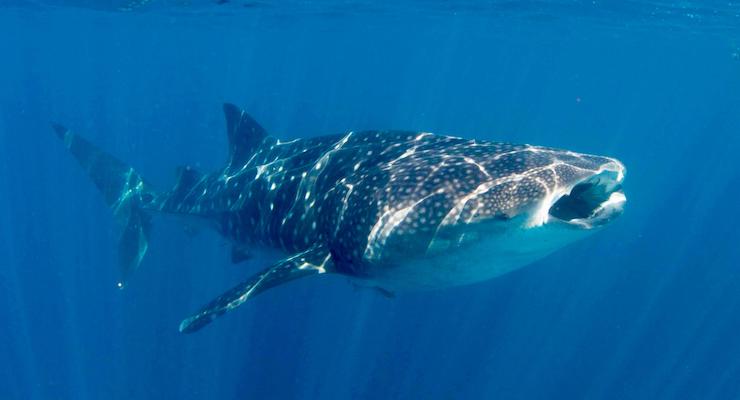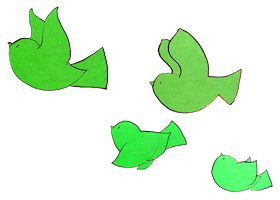The second half of my month-long trip to Australia with my 16-year old son Max was wonderful. Having spent a week in Sydney and then a week in Queensland exploring the Great Barrier Reef and Daintree Rainforest (you can read about the first half of our trip in this post), we headed into the heart of the country.
Week three: The Red Centre – Uluru to Alice Springs
We took a dawn flight from our blue and green tropical paradise across to the Red Centre (aka Central Australia), landing in the tiny airport of Uluru.

Uluru, Australia. Copyright Lorenza Bacino
Uluru
You’ll need to hire a car for the outback and choose accommodation well in advance. Facilities are all in one place, at the Ayers Rock Resort, as the site is protected and access is restricted. Accommodation varies from camping options to high end hotels. We stayed at the mid-range Desert Gardens Hotel and had a room with a view of the Rock.
The beauty of the outback is something to behold. The light and colours here are like nothing you’ve ever seen and are so different from the colours of the reef and rainforest. The Rock changes its hues throughout the day, from red to russet, to purple at sunset. We headed out multiple times to see it, never tiring of staring at its mysterious beauty. We walked around it but not up it. Climbing is banned officially from October 2019, but the aboriginal people of the area have been asking visitors to refrain for decades.
Field of Light
A highlight from our visit was seeing the ‘Field of Light’. A coach collects you from the resort and takes you out into the desert to the base of Uluru at sunset. Find a spot overlooking the field and grab your glass of bubbles (or a coke if you’re a teen) and just watch and wait. Gradually, as darkness descends, 50,000 solar-powered stems begin to light up and change colour before your eyes. The stems glitter in the desert, covering an area bigger than seven football pitches. This enormous light installation is by celebrated artist Bruce Munro. It’s a thing of beauty and to be enjoyed peacefully under the night sky, which in the outback is very special. We loved this experience.

Field of Light, Uluru, Australia. Copyright Max Rolt Bacino
Kata Tjuta
A 45-minute drive from the Ayers Rock Resort takes you to Kata Tjuta also known as the Olgas. These huge dome-shaped rock formations are another sacred Aboriginal place. The Valley of the Winds walking trail is biblical in its beauty. You can opt to do a short hike to the Kanu lookout, which takes an hour return, or you can proceed around and through the valley to do the full circuit, which can take three to four hours. It’s challenging at times, steep, with some loose rocks to negotiate. You need sturdy footwear and water. But it is simply beautiful with spectacular views across this mars-like landscape and well-worth the effort.
Alice Springs
We opted to drive from Uluru to Alice Springs for our Outback Adventure. You can also fly into Alice. The drive took about five and a half hours and we stopped at some great quirky pit stops along the way. Unfortunately, we could not fit in a trip to King’s Canyon, as we underestimated the distance involved. I would recommend taking a whole day and night and doing the 300 km detour to the canyon, spending the night on site. It was all booked out when we tried so we’ll have to do this another time.
Alice Springs is no longer the isolated outback town it once was. It now boasts an international conference centre and there are many hikes you can do from here. We visited Ellery Creek, a gorgeous water-hole an hour outside of Alice, where we did a pretty circuit walk lasting an hour.

Walk from Alice Springs, Australia. Copyright Max Rolt Bacino
Earth Sanctuary Astronomy Centre
A must-do just 20 minutes outside of Alice is the Earth Sanctuary Astronomy Centre. The night sky in central Australia has virtually no light pollution and visibility is second-to-none. This family-run business offers talks and tours to galactic enthusiasts of all ages. Despite the cold, we loved our evening here. The talk was fascinating and the sky was as clear as crystal. The brothers combine their knowledge and passion and have some serious telescopes on site that you can look through after the talk. We saw Saturn and her rings, Jupiter and Mars. It’s well worth the effort to reach this place and you can take a glass of wine or beer to the arena to listen to the talk.
Olive Pink Botanic Garden
I strongly recommend breakfast at the Olive Pink Botanic Garden to start your day. It’s so pretty here, and there’s a fairly easy climb from here where you’ll see bush kangaroos and wallabies if you’re lucky. The view across the town of Alice from the top is gorgeous and totally worth the detour.
Around Alice Springs
Other places of interest in and around Alice include the Desert Park Sanctuary where you can learn from well-informed staff about the desert creatures, as well as witnessing a great birds of prey show. www.alicespringsdesertpark.com.au
The Alice Springs Cultural Centre on the edge of town is full of interesting exhibitions, art displays and museums – we loved the Aviation museum in two enormous hangars on site, with its old planes and stories of adventure, bravery, survival and loss.
Remember the desert gets really cold in winter, so thermals and winter woollies are de rigueur. Daytime temperatures are around 17-23 degrees with blue skies and sunshine.
Where to stay in Alice Springs
In Alice Springs we stayed at the Desert Palms, a similar resort to the one we’d stayed at in Port Douglas, with individual units on a larger resort. It was fine, nothing special, but conveniently located to get into and out of town
From Alice Springs we needed to travel to Perth for the next part of our trip. You can fly directly from Alice to Perth, but we had to take a detour and spend a day in Darwin as the direct flight was cancelled for some reason – this is worth checking as changes do occur. If this happens to you, you may as well make the most of it and leave the airport and check out Darwin, which is what we did. We had six hours to kill and so explored it quite well.

Week four: Ningaloo Reef World Heritage site
Ningaloo Reef isn’t the easiest of places to get to, or the cheapest. But according to Max, it’s the place he would most like to revisit. We flew from Perth, half-way up the West coast of Australia, to Learmonth Airport, which is about a 30-minute drive from Exmouth and has a population of just over 2000. Exmouth is where we stayed and where Max and I had the most exhilarating of experiences.
Snorkelling with whale sharks
The reef is swimming distance from the beach, unlike the Barrier Reef, therefore the boat trips are shorter and you are out in open water in no time. We went on a trip with Exmouth Dive & Whalesharks Ningaloo. Our adventure-packed day snorkelling with whale sharks is one that I will never, ever forget. Spotter planes scour the ocean for whale sharks and when they see one, they radio in to the waiting boats. We were told to don our fins and masks and take up our positions at the end of the boat as we went full-throttle towards the area where the whale shark was spotted. We had been briefed about how to behave and what to do and what not to do in advance, but all at once, we were thrown into a frenzy of activity as we hurtled through the waves. Suddenly we heard ‘Go, go, go’ as we plunged into the swell. I forgot to put my head under the water and then all I could hear were strange yelps of excitement coming through the snorkel next to me. Max surfaced and shouted at me ‘Mum!!! Look under the water now!!!’. When I did, I saw the most enormous, graceful and peaceful creature gliding through the water towards us. I did not feel afraid. On the contrary, I was transfixed at the beauty of this creature and I felt like crying with the emotion of being within touching distance. Throughout the day, we were lucky enough to swim three times with the whale shark. It was an exhausting yet exhilarating experience. A pod of dolphins came to join us at the bow of the boat for a stretch, a lone turtle was bobbing about in the turquoise waves not far off in the distance, a stingray hid under a rock as we snorkelled around the reef, and on the way back to shore a lovely whiskered-face dugong was spotted, to our utter delight. Max was beside himself, exclaiming that this had been the best day ever. We fell asleep that night to the sound of the waves in our ears and the feel of the warm sun on our backs.

Whale shark at Ningaloo reef, Australia. Copyright Max Rolt Bacino
Where to stay in Exmouth
We stayed at Exmouth Escape Resort, which was similar to the other resorts that we stayed at – a large resort with independent units, with self-catering options if you wanted them. We had a car and the resort had a good restaurant too. Exmouth is very, very small and so there’s not that much choice. We loved The Whalebone, a renovated brewery which has been made into an amazing eatery, and is great for pizza and dumplings and live music – all in the middle of nowhere, seemingly, but everyone hangs out there….
Around Ningaloo
During our Ningaloo stay, we also visited Town Beach for an early morning stroll and a coffee. A couple of pelicans were bobbing around on the flat shiny surface of the sea. We ventured further south into the Cape Range National Park to see other beaches. Max drift snorkelled at Turquoise Bay and saw three turtles in the space of five minutes and ‘loads of coloured fish’. Kite surfers grace the southern beaches of Red Bluff and Gnaraloo, and surfers head for Lighthouse Bay.

Turquoise bay, Ningaloo reef, Australia. Copyright Max Rolt Bacino
Ningaloo Reef surpassed all our expectations. It is truly a place of adventure, the harshest and most inhospitable of places, burnt by the sun, windswept and wild. It’s nothing like the tropical Barrier Reef. It is a place of sand dunes and spiky spinifex, isolated and exposed. That is its beauty. And that is how we hope it will remain.
From Ningaloo we flew from Exmouth to Perth to spend a few days with friends before travelling home to London.
Flights
We travelled to Australia from the UK with Qantas from Heathrow to Sydney, with a quick stopover in Singapore. This took about 23-24 hours in total.
All of our internal flights were with Qantas, as they’re cheaper if you do the long-haul with Qantas too. So we flew from Sydney to Cairns, Cairns to Uluru, Alice to Perth, Perth to Exmouth (Learmonth airport), then back to Perth before taking the relatively new direct Perth to London flight home. That flight takes 17 hours, although ours was a bit less. Our trip was organised with the help of Travel Counsellor, Jenny Igoe.
Verdict
Max, 16, says: ‘This was a once in a lifetime adventure and is the best trip I have ever been on. The huge variety of activities we did while in Australia kept me engaged the whole time. And travelling all around Australia to all the different areas (except for the South) allowed me to experience the humid rainforest, the dry and cold desert and the burning hot coast. The best day out of the whole month was the whale shark tour just because we saw all the animals we could possibly see in one day with an added bonus of the whale shark!’
Lorenza says: ‘I agree with all of the above. Max was a wonderful travel buddy and I am so lucky to have had the opportunity to spend a month with him sharing this beautiful experience. It was indeed the trip of a lifetime.’

Max & Lorenza Bacino at Uluru at sunrise. Copyright Lorenza Bacino
More on Australia
You can read about the first part of our trip in this post:
2-week itinerary: Sydney & the Great Barrier Reef with a teenager
Disclosure: There is nothing to disclose for this trip – it was a holiday, and Lorenza and Max were not hosted anywhere. All words, opinions and images are those of Lorenza and Max. This post contains some affiliate links, which means that if you clicked through and bought something we would receive a small commission, at no cost to you.


I’m planning a family vacation to Australia with my two teenage boys and found your article hugely informative. I’m considering adding on a Ningaloo side trip after reading your posting. Would love to hear any other tips you might have for travel in Australia keeping teenagers in mind. Thanks!
Whale shark… interesting… thanks for sharing I think I know what I need to put next into my list now 😉